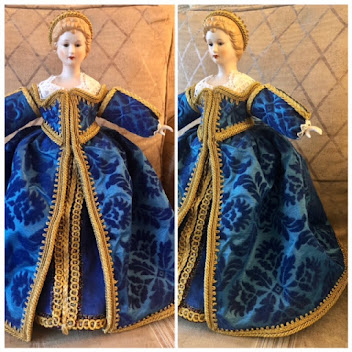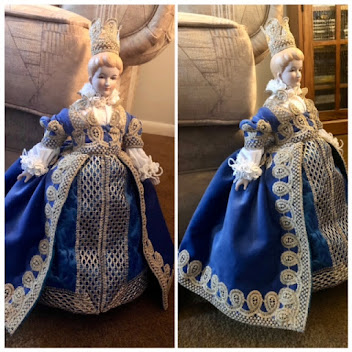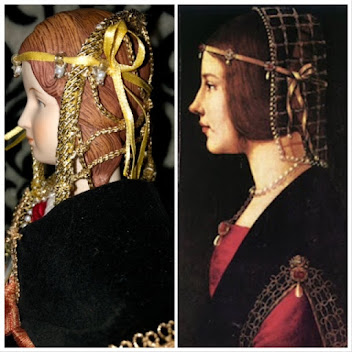 I am working on some cosmetic recipes from the American Duchess Guide to 18th Century Beauty. So today I mixed up some fat as in recipe mentioned with bees wax, spices and essential oils to make a Mareschal Pomatum. I have some more to add to my mix. Although I have my trusty mortal and pestle near by to grind up the rest of the spices and add the starch after I double boil the mixture to a liquid again. It smells great already. Today was going to be picking up other essentials anyway, so picked up the supplies to make the hair powder as well.
I am working on some cosmetic recipes from the American Duchess Guide to 18th Century Beauty. So today I mixed up some fat as in recipe mentioned with bees wax, spices and essential oils to make a Mareschal Pomatum. I have some more to add to my mix. Although I have my trusty mortal and pestle near by to grind up the rest of the spices and add the starch after I double boil the mixture to a liquid again. It smells great already. Today was going to be picking up other essentials anyway, so picked up the supplies to make the hair powder as well.I like the brownish color of the Mareschal mix for both the pomatum and the hair powder. The closer to hair colored cosmetics makes more sense for what I am trying to achieve with 16th century hair styles. This would be better for my hair than modern products without the heavy chemicals and other additives. Plus I could use this as a hair moisturizer for those days when I don’t wash my hair, which is a lot. I have a feeling there were similar concoctions for hair and skin in the 16th century. Although I feel this later source is a good place to safely start.
My hair is naturally curly and thick, so combing is difficult and the ends like to split. It takes my hair twice as long to grow since it coils. My scalp and hair are dry so regular washing is problematic since it strips hair of its natural oils. So I had to adopt alternative methods to care for my hair way before it was popular to find natural methods for hair care. My hair took over a decade to grow below my shoulders. Currently it sits mid back and I only had the ends cut 4 years ago, prior that span I had not had it cut in 10 years. I needs the ends trimmed again but it’s super healthy and the snags only occur at the ends. The last hair dresser was impressed with my hair and how healthy it was for not being cut regularly. I told her my methods and she mentioned that it works keep it up.
So my goal is to make the hair powder this weekend and to finish off the minor details of the pomade mix. The shoes as mentioned in my prior post are in the mail. Should be at my house by Monday. So lots to look forward to keeping things in a Tudor period slant as I can. Although it’s good to branch out and keep an eye on other time frames. It’s amazing when you can walk back the methods and the research.
Be well and stay Safe,
THL Marrin O’Cadhla .





No comments:
Post a Comment